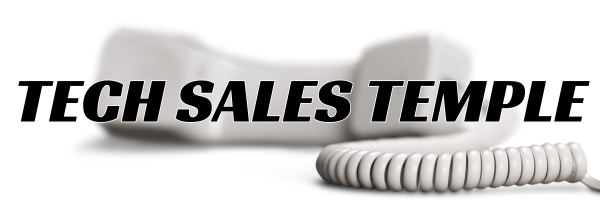
Whether you’re running a startup or scaling a small business, every dollar counts. You’ve got growth goals and revenue targets to hit, but to do that, you need customers. The question is—how much does it really cost to get a new customer through your door? That’s where Customer Acquisition Cost (CAC) comes in.
Customer Acquisition Cost isn’t just a buzzword for your marketing and sales reports; it’s a critical metric that can make or break your business strategy. Understanding CAC helps you allocate budgets, measure ROI, and ultimately create a sustainable business model. But how does this all work? And why does CAC matter so much for your company’s survival and growth?
By the end of this, you’ll not only have a clear understanding of what CAC is and how to calculate it, but you’ll also see why it’s central to building a profitable business. Let’s break it down.
What Is Customer Acquisition Cost (CAC)?
First things first — what does Customer Acquisition Cost actually mean? Simply put, CAC is the total cost of acquiring a new customer. It includes everything you spend on sales and marketing efforts aimed at converting leads into paying customers.
The Formula for CAC:
The formula for CAC is straightforward:
Customer Acquisition Cost =
Total Sales and Marketing Costs
÷
Number of New Customers Acquired
For Example:
If your company spent $10,000 on sales and marketing last month and acquired 50 new customers during that time, your CAC is:
$10,000 ÷ 50 = $200 per customer.
But here’s the deal — CAC isn’t just a number you jot down in a spreadsheet. It’s a reflection of the efficiency of your customer acquisition strategies. If it costs a lot to acquire each customer, your profitability will take a hit unless your customers stick around long enough to justify that cost. Spoiler alert — there’s a metric for that too (we’ll touch on it later).
What Does CAC Include?
To understand CAC fully, you first have to recognize the expenses that contribute to it. Here are some common elements factored into Customer Acquisition Costs:
1. Marketing Costs
- Paid Ads (PPC, social media, display ads): Includes ad spend on platforms like Google Ads, Facebook, and LinkedIn.
- Content Creation: Blog posts, videos, social media posts, and other material to drive traffic.
- SEO Efforts: Costs related to hiring experts or tools to optimize your website.
- Email Campaigns: Design, tools, and resources for newsletters and cold outreach.
2. Sales Expenses
- Salaries: The compensation for your sales team.
- CRM Tools: Platforms like HubSpot, Salesforce, or Pipedrive.
- Commissions: Incentives paid to sales reps for closing deals.
- Travel Expenses: Costs for sales meetings or attending events.
3. Other Operational Costs
- Software Tools: Automation platforms and analytics tools help reduce manual efforts but are part of your overhead.
- Offers/Discounts: Free trials, discounts, and other acquisition incentives often get factored into the cost.
Think of CAC as the sum of all the resources you burn to turn a “meh” lead into someone who says, “Take my money!”
Why Does CAC Matter for Your Business?
If you’re in sales, marketing, or leadership, Customer Acquisition Cost isn’t merely a “good-to-know” metric; it’s a must-know metric. Understanding this cost has far-reaching implications for your business operations and strategy. Here’s why:
1. Measure Sales and Marketing Efficiency
CAC is essentially a report card for your sales and marketing teams. A high CAC could signal inefficiencies in your pipeline, poor targeting, ineffective campaigns, or costly sales processes.
2. Aligning CAC with Customer Lifetime Value (LTV)
CAC doesn’t exist in a vacuum — it only makes sense when paired with Customer Lifetime Value (LTV). The LTV/CAC ratio is your north star for profitability. Ideally, this ratio should be at least 3:1, which means your customers generate three times the revenue it costs to acquire them.
Example:
- If your CAC is $200 and your LTV is $800, your ratio is 4:1. Good job — you’ve got a sustainable model!
- Conversely, if your CAC equals your LTV, you’re breaking even. You need to rework your acquisition strategies immediately.
3. Budget Allocation
Knowing your CAC helps you justify where your dollars are going. You can compare CAC across acquisition channels to determine which ones are worth scaling and which are simply burning cash.
4. Attracting Investors
For startups and small businesses looking for funding, CAC is a make-or-break metric. Investors care about how cost-efficiently you can grow. Showing a robust CAC-to-LTV ratio signals that you’re not just chasing growth — you’re chasing profitable growth.
5. Sustainability and Scalability
An astronomical CAC is a death sentence for startups. You don’t want to run a hamster wheel where you’re spending all of your revenue just to acquire more customers. A healthy CAC signals that your model is not only profitable but also scalable.
How to Improve Your CAC
Now that we know how important CAC is, it’s worth asking—how can you reduce it? Here are some actionable strategies to optimize your customer acquisition efforts:
1. Focus on Your Ideal Customer Profile (ICP)
Your marketing and sales efforts shouldn’t cast a wide net. Instead, focus on accounts most likely to convert. Tools like HubSpot, LinkedIn Sales Navigator, or even customer heat maps can help sharpen your targeting.
2. Better Lead Nurturing
Engaging leads earlier in the sales funnel with automated workflows, personalized email sequences, or retargeting ads can drastically reduce CAC by improving lead-to-customer conversion rates.
3. Leverage Organic Channels
Content-driven strategies like SEO, blogging, and social media outreach might take longer, but they’re highly cost-effective in the long run. Aim to turn your website into a lead-generation machine by developing valuable funnels for your audience.
4. Refine Your Sales Process
Train your sales team to close deals faster or automate time-consuming tasks like follow-ups to free up their bandwidth for genuine conversions.
5. Retention Over Acquisition
It’s cheaper to keep a customer than to get a new one—retain your current customer base by creating win-back campaigns, loyalty programs, or offering product upsells.
6. A/B Test and Optimize
Don’t guess what works — test, measure, and refine your approach. Whether it’s testing ad creative, email subject lines, or landing pages, optimizing every stage of your funnel can lower costs.
Creating a Business That Lasts
Mastering your Customer Acquisition Cost isn’t just about saving money; it’s about laying the groundwork for long-term success. When you understand what it costs to acquire a customer, you can make smarter, data-driven decisions for allocating budget, scaling operations, and winning market share.
Keeping CAC low but sustainable — while ensuring LTV is high—positions your business to not only survive but thrive in competitive markets. With sales and marketing constantly evolving, keeping an eye on your CAC isn’t optional. It’s critical.
Looking to hone your skills even further? Explore the rest of our Sales Dictionary or join the Tech Sales Temple Forum for real-world insights from experts who’ve been there, done that.
Welcome to better selling, without the fluff.
